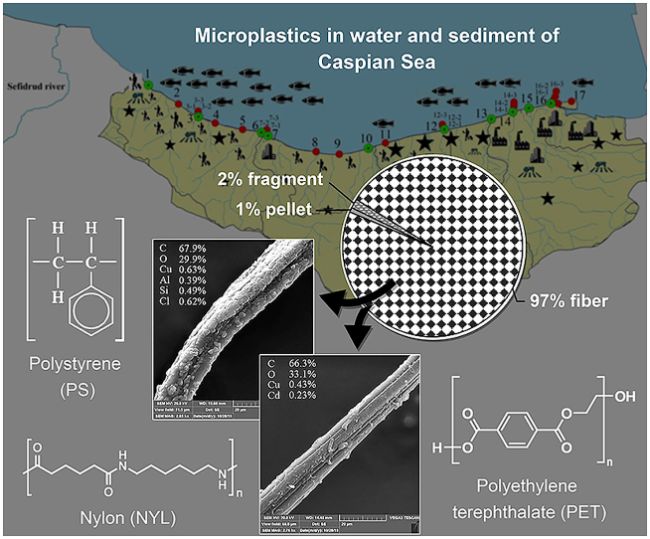Numerous studies document that microplastics are present very many places in nature. In a new article, researchers from Centre for Biogeochemistry in the Anthropocene and colleagues wanted to find the sources of microplastics in the world's largest lake, the Caspian Sea.
The scientists looked at different features of the microplastics (polymers, shape, color) and how they are distributed in the environment along the Iranian coast of the Caspian sea. They then combined this with data on local sea currents, as well as physical and biogeochemical processes.
The results showed that most of the microplastics in the surface sediments consist of dark fibers, leading the researches to conclude that most of it probably originate from the textile industry, which is an important industry in this region. In addition, the microplastic fibers might originate from at-home washing of clothes and industrial fishing along the coast.
The new article is published in the peer-reviewed journal Ecotoxicoloy and Environmental Safety. The lead author of the study is CBA guest researcher Mohammad Javad Nematollahi, and it is written together with CBA environmental chemistry professor Rolf David Vogt and others. Read it here: https://www.sciencedirect.com/science/article/pii/S0147651320309763
Media enquiries: Rolf David Vogt
